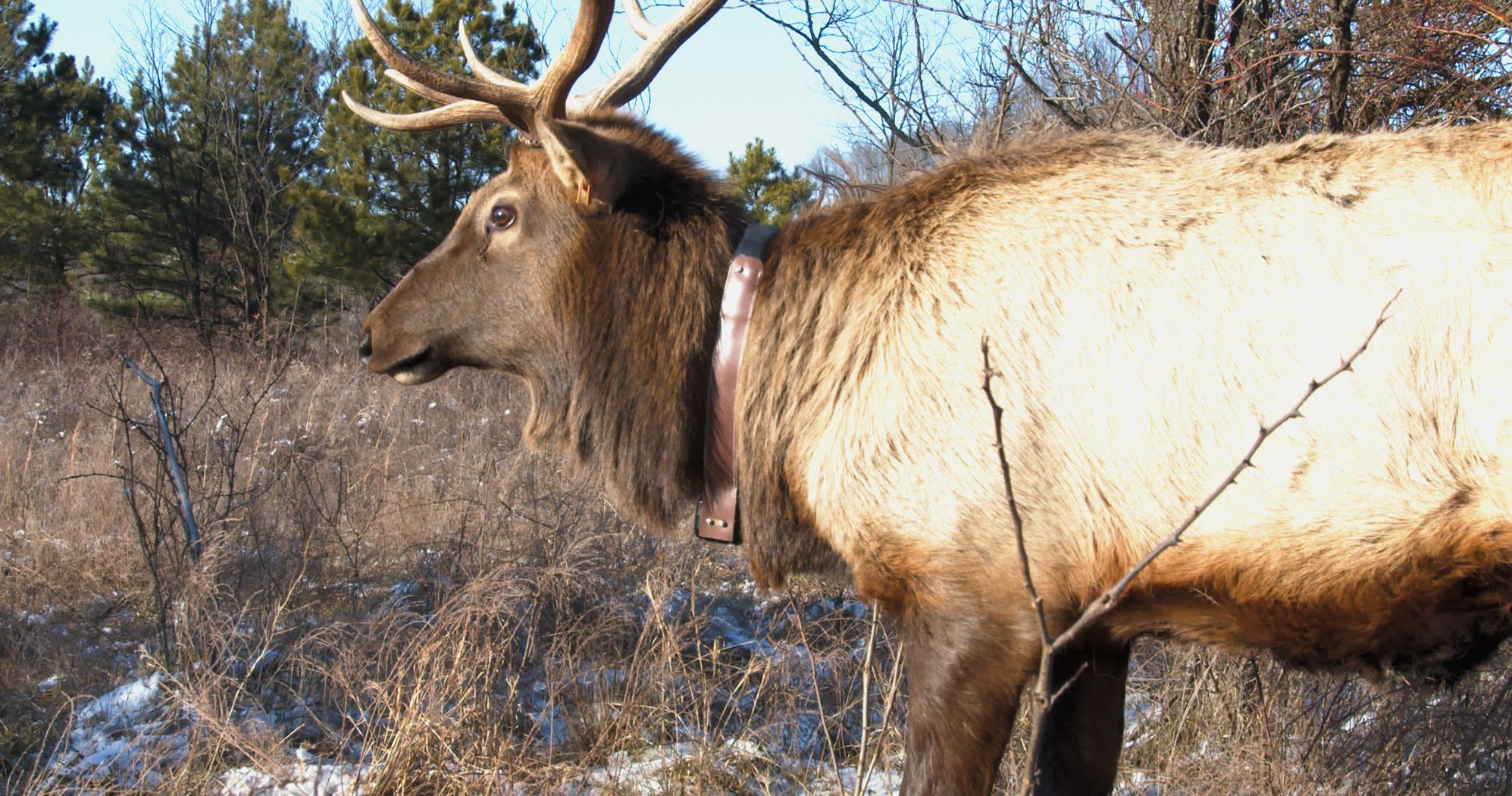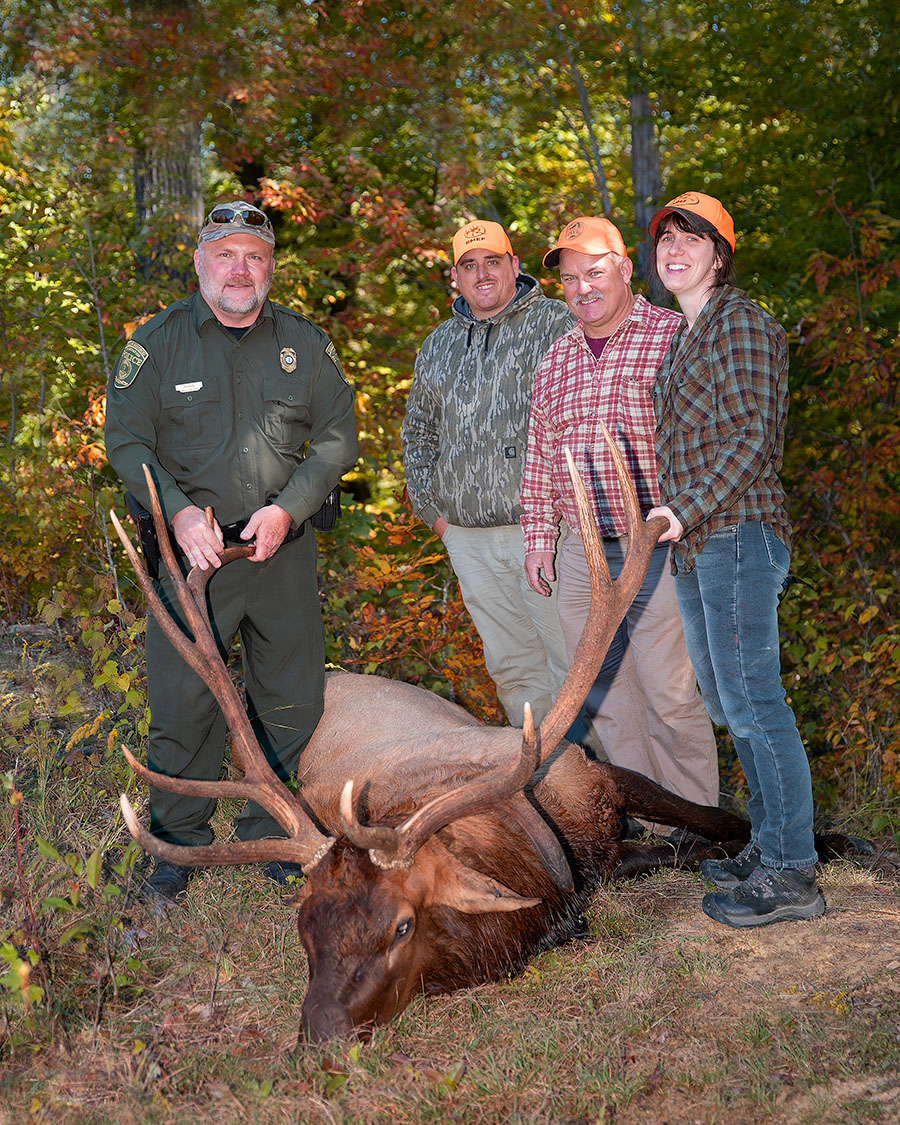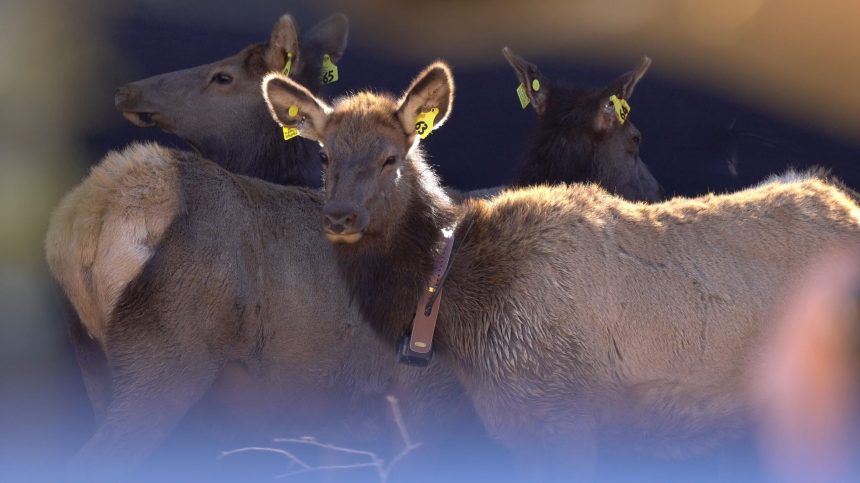By Samantha Pedder
Elk—an iconic species whose bugle inspires hunters and wildlife watchers alike—is a symbol of conservation success. Pennsylvania, Virginia, West Virginia, and Kentucky are four eastern states that have recovered elk populations successfully in the last few decades. In October 2022, Virginia hosted its first hunt for elk, following a trend of other states in recent years. This momentous occasion resulted from years of strategic effort by the agencies’ biologists, conservation partners, and many others. Restoration of these large ungulates requires extensive planning, research, and continual monitoring to ensure the health and well-being of the herd. Agency management goals generally focus on establishing healthy herds to benefit biodiversity on the landscape and provide wildlife viewing and recreational hunting opportunities. Each state offers a unique tale in its efforts to recover this species, full of challenges and successes, and all funded in part or entirely by Wildlife Restoration funds.
Resilience Leads to Success in PA
Restoring a statewide elk herd requires diligence, and the employees of the Pennsylvania Game Commission (PGC) know this firsthand. The PGC reintroduced 177 elk between 1913 and 1926 on reclaimed coal mining land in the northern part of the state. Regulated hunts occurred from 1923 to 1931, with only one animal harvested in the final year. Habitat loss, disease, poaching, and competition with a growing white-tailed deer population all challenged the elk herd, which dwindled to a few individuals. As a result, elk hunting closed for more than 70 years.
With backing of reliable and consistent funding from federal excise tax dollars paid by archery, firearms, and ammunition manufacturers via the Wildlife Restoration Act (Pittman-Robertson), PGC persevered and continued restoration efforts. Agency employees developed new and innovative science-based management strategies, and successfully reopened regulated hunting opportunities in 2001. Today the herd numbers more than 1,000.
“Elk are a key species in our state, and they require a lot of effort and funding to ensure our herd thrives,” commented Bryan Burhans, Executive Director of PGC. “As forestry and agricultural practices changed the landscape of Penn’s Woods, we lost the key foraging and grazing grasslands that elk need. We’ve had to get strategic to maintain this critical habitat, and we’ve used Wildlife Restoration dollars to make that happen.”
Research and Strategy Result in WV’s Success
Long before hooves hit the ground, the West Virginia Division of Natural Resources (WVDNR) used Wildlife Restoration funds to identify sites in the southern part of the state that featured coalfields, limited landowner conflict, and high interest and support for elk reintroduction by the local communities.
“Since 2005, we’ve done our due diligence with feasibility studies using the best science of sociology and biology to narrow down and target where to reintroduce elk,” commented Paul Johansen, Chief of WVDNR’s Wildlife Resources Section. “We took a dual approach with our efforts to establish a viable and self-sustaining herd. We wanted to ensure that the land where the herd was established was accessible by the public—both hunters and wildlife watchers alike, and also that the elk were from a secure source to minimize introduction of disease in our state.” The WVDNR bought large blocks of contiguous public land where the elk could roam. “Through Wildlife Restoration funds, license fees, donations, and other sources, the public now has more than 44,000 acres grassland habitat for elk and other wildlife species,” said Johansen. “It’s a draw for birdwatchers and hunters alike.”

Elk were imported over five years from Arizona and Kentucky starting in late 2016 and released in the selected counties. “That area is still active with mining and forestry practices, and while we might have planned to mitigate some conflicts with industry, we are witnessing just the opposite. Active mining operations and forest harvests are being planned or reclaimed with the elk in mind, and the elk love it. It has been amazing to see how compatible that can be in restoring the habitat and the land after these practices occur. We knew we picked a good area through our research and engagement with the public, but to see this level of support has been incredible.”
Looking to the Future of Eastern Elk Herds
The work and opportunity to manage elk herds in the eastern states is far from over, and through strategic allocation of Wildlife Restoration funds like those by the PGC and WVDNR, the future for these herds is optimistic. Agencies will continue to face emerging challenges in elk management – such as balancing human-wildlife conflicts with local landowners or tracking the spread of chronic wasting disease across their states – but like other challenges, they are skilled and prepared to overcome these as well. The growing number and size of the elk herds stand as testaments to their success and spur their continued pursuit to return a critical, keystone species of the East.


